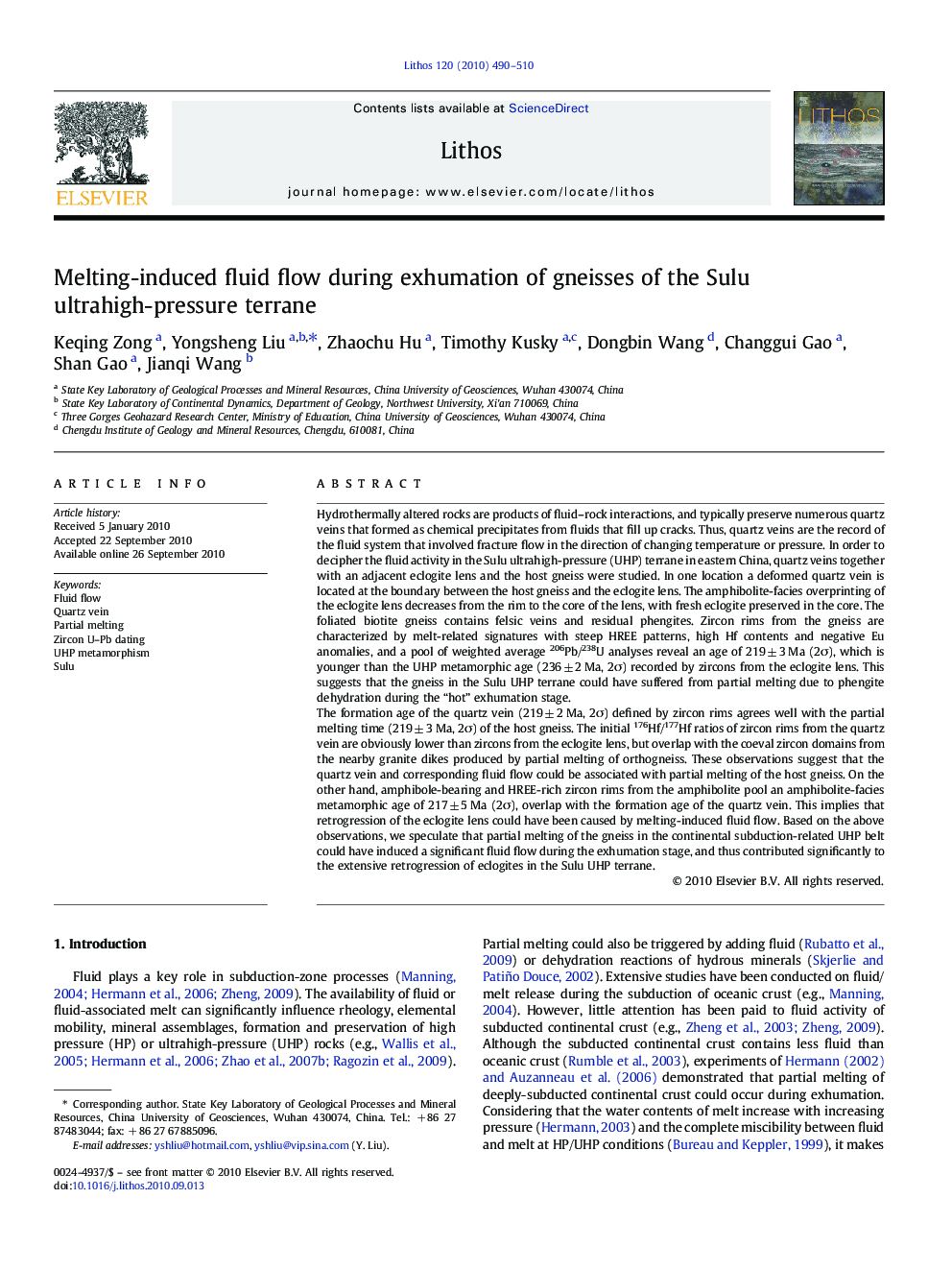| کد مقاله | کد نشریه | سال انتشار | مقاله انگلیسی | نسخه تمام متن |
|---|---|---|---|---|
| 4716860 | 1638726 | 2010 | 21 صفحه PDF | دانلود رایگان |

Hydrothermally altered rocks are products of fluid–rock interactions, and typically preserve numerous quartz veins that formed as chemical precipitates from fluids that fill up cracks. Thus, quartz veins are the record of the fluid system that involved fracture flow in the direction of changing temperature or pressure. In order to decipher the fluid activity in the Sulu ultrahigh-pressure (UHP) terrane in eastern China, quartz veins together with an adjacent eclogite lens and the host gneiss were studied. In one location a deformed quartz vein is located at the boundary between the host gneiss and the eclogite lens. The amphibolite-facies overprinting of the eclogite lens decreases from the rim to the core of the lens, with fresh eclogite preserved in the core. The foliated biotite gneiss contains felsic veins and residual phengites. Zircon rims from the gneiss are characterized by melt-related signatures with steep HREE patterns, high Hf contents and negative Eu anomalies, and a pool of weighted average 206Pb/238U analyses reveal an age of 219 ± 3 Ma (2σ), which is younger than the UHP metamorphic age (236 ± 2 Ma, 2σ) recorded by zircons from the eclogite lens. This suggests that the gneiss in the Sulu UHP terrane could have suffered from partial melting due to phengite dehydration during the “hot” exhumation stage.The formation age of the quartz vein (219 ± 2 Ma, 2σ) defined by zircon rims agrees well with the partial melting time (219 ± 3 Ma, 2σ) of the host gneiss. The initial 176Hf/177Hf ratios of zircon rims from the quartz vein are obviously lower than zircons from the eclogite lens, but overlap with the coeval zircon domains from the nearby granite dikes produced by partial melting of orthogneiss. These observations suggest that the quartz vein and corresponding fluid flow could be associated with partial melting of the host gneiss. On the other hand, amphibole-bearing and HREE-rich zircon rims from the amphibolite pool an amphibolite-facies metamorphic age of 217 ± 5 Ma (2σ), overlap with the formation age of the quartz vein. This implies that retrogression of the eclogite lens could have been caused by melting-induced fluid flow. Based on the above observations, we speculate that partial melting of the gneiss in the continental subduction-related UHP belt could have induced a significant fluid flow during the exhumation stage, and thus contributed significantly to the extensive retrogression of eclogites in the Sulu UHP terrane.
Research Highlights
► Quartz vein formation is coeval with the gneiss-melting in the Sulu UHP terrane.
► Retrogression time of the eclogite is similar to the age of quartz vein formation.
► Gneiss-melting can induce extensive fluid flow and retrogression of the eclogite.
Journal: Lithos - Volume 120, Issues 3–4, December 2010, Pages 490–510